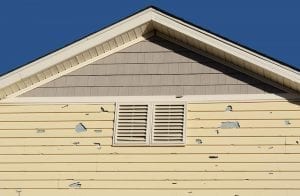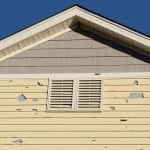How do I know if insurance will cover damage from a storm?

Most Common Damage
Wind damage to roofs, pipes freezing and/or bursting resulting in flood, and falling branches, debris and trees that cause flashing leaks top the list that rounds out with ice dams. The good news is that your homeowners insurance pays for most of the damage. Fire also causes common damage. A small percentage of fires, 15 percent, result from overloaded circuits and electrical outlets. Some fires spawn from lightning strikes though. In the Midwest, add hail to the list. In 2017, 900,000 buildings in Illinois incurred hail damage making the state the second most damaged by hail in the US.
Coverage Differences
Insurance policies treat storm damage differently depending on the insurance company and state in which it’s issued. Illinois residents are lucky that only the standard rising flood exception applies to them. As common as hurricane damage is in Texas, that state requires a separate wind damage policy.
The rising water exception refers to floods caused by rising water entering the home. This usually occurs as a result of heavy precipitation. With rain, the effects occur almost immediately, but in the case of snow storms, flood can occur during snow melt if the temperature rises quickly enough. On the other hand, homeowners insurance policies do usually cover floods caused by leaking pipes or burst pipes, if the issue developed suddenly. It probably will not cover it if the leak developed over time because the insurance company will attribute the damages to homeowner negligence.
Similarly, mold damage from a rising water flood probably won’t get covered. Neither will mildew damage.
Read Your Policy
Read your homeowners policy. Due to riders and options you chose at purchase, your policy can differ from your next door neighbors’ even if you use the same company.
Your policy specifically lists every hazard that it covers. It also describes each exception.
The policy documents list the required deductible you must pay before insurance provides funds for repairs. The term deductible refers to the amount you must pay out of pocket before insurance contributes to the repair bill.
According to Insurance.com, after Hurricane Katrina, most insurance companies changed the rules of damage coverage for homeowners policies. They now do not cover cosmetic damage. If the home remains functional, insurance won’t pay. That means if your siding got dented, the policy won’t cover it, but if your siding got blown off and the underlying structure was damaged, it will cover it. Don’t count on that though. Each insurance company created its own definition of cosmetic and of functional.
If your homeowners policy doesn’t cover a peril or hazard that concerns you, consider adding an umbrella policy. It not only covers liability, but also damages to the property and some of its contents such as jet skis, boats, swimming pools, etc.
Contact Borders Construction, serving the Chicagoland area, to start repairs after a storm. We repair and replace roofing, siding, windows, and gutters, and we specialize in storm damage insurance replacement.
